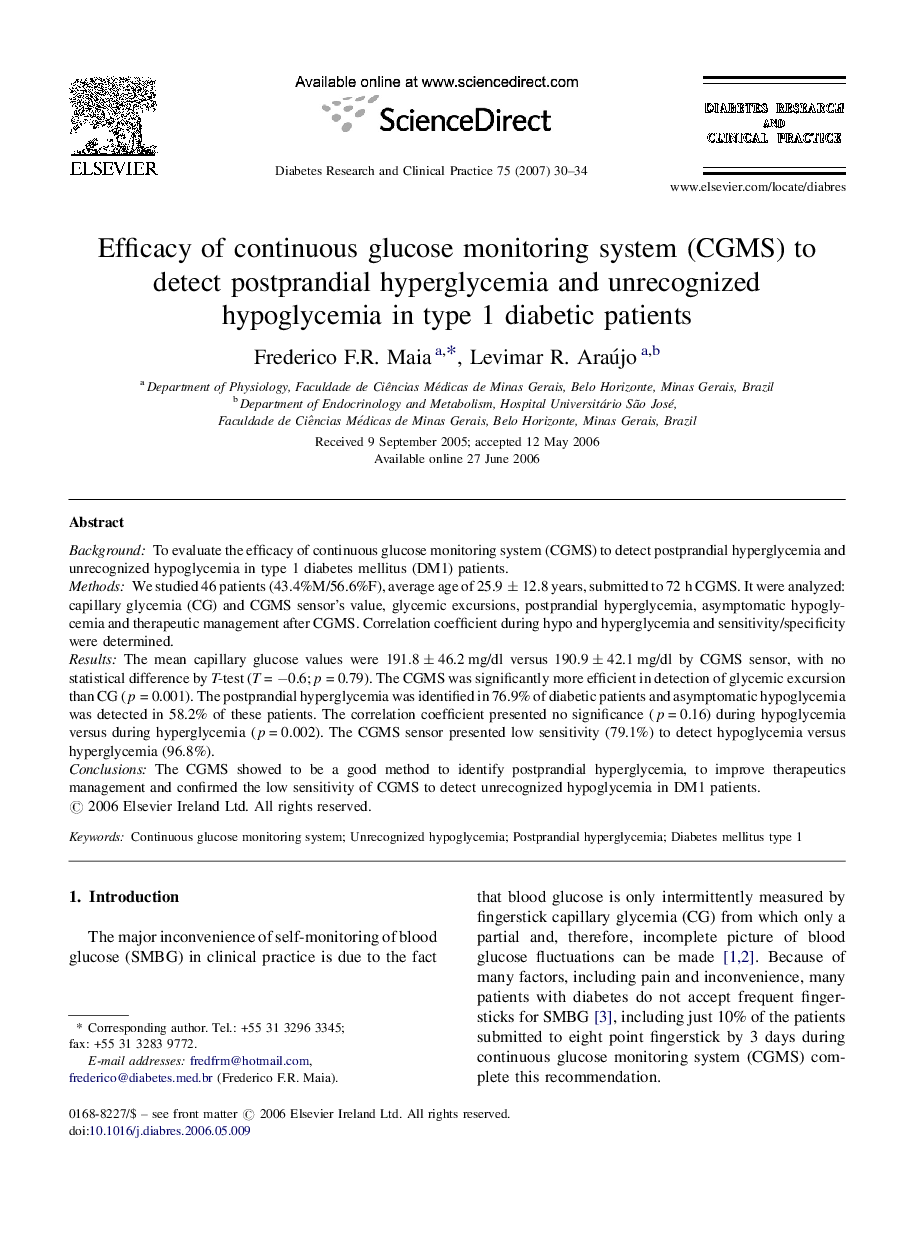| کد مقاله | کد نشریه | سال انتشار | مقاله انگلیسی | نسخه تمام متن |
|---|---|---|---|---|
| 2798802 | 1155700 | 2007 | 5 صفحه PDF | دانلود رایگان |

BackgroundTo evaluate the efficacy of continuous glucose monitoring system (CGMS) to detect postprandial hyperglycemia and unrecognized hypoglycemia in type 1 diabetes mellitus (DM1) patients.MethodsWe studied 46 patients (43.4%M/56.6%F), average age of 25.9 ± 12.8 years, submitted to 72 h CGMS. It were analyzed: capillary glycemia (CG) and CGMS sensor's value, glycemic excursions, postprandial hyperglycemia, asymptomatic hypoglycemia and therapeutic management after CGMS. Correlation coefficient during hypo and hyperglycemia and sensitivity/specificity were determined.ResultsThe mean capillary glucose values were 191.8 ± 46.2 mg/dl versus 190.9 ± 42.1 mg/dl by CGMS sensor, with no statistical difference by T-test (T = −0.6; p = 0.79). The CGMS was significantly more efficient in detection of glycemic excursion than CG (p = 0.001). The postprandial hyperglycemia was identified in 76.9% of diabetic patients and asymptomatic hypoglycemia was detected in 58.2% of these patients. The correlation coefficient presented no significance (p = 0.16) during hypoglycemia versus during hyperglycemia (p = 0.002). The CGMS sensor presented low sensitivity (79.1%) to detect hypoglycemia versus hyperglycemia (96.8%).ConclusionsThe CGMS showed to be a good method to identify postprandial hyperglycemia, to improve therapeutics management and confirmed the low sensitivity of CGMS to detect unrecognized hypoglycemia in DM1 patients.
Journal: Diabetes Research and Clinical Practice - Volume 75, Issue 1, January 2007, Pages 30–34